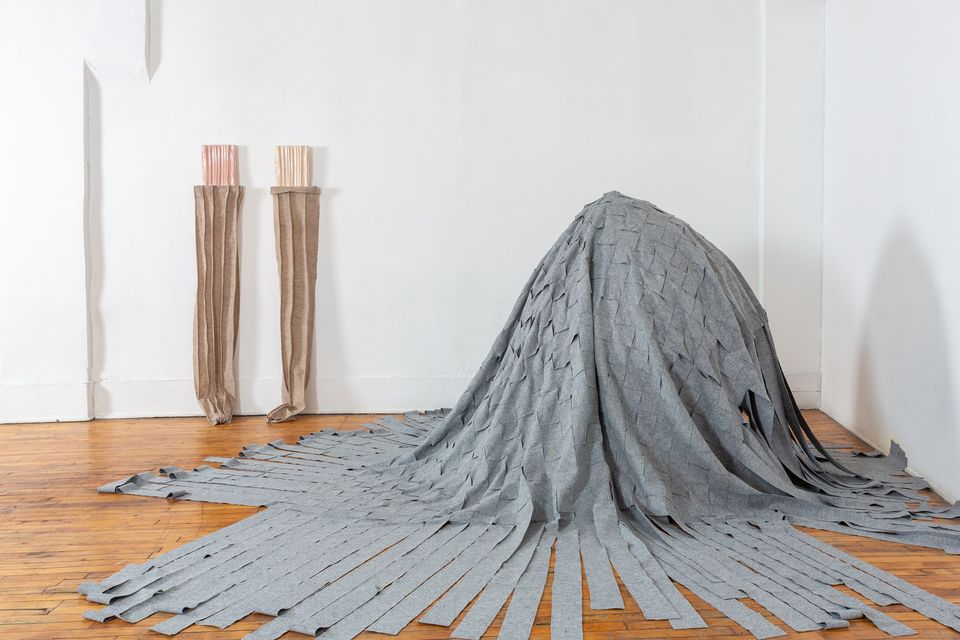Mar 27th 2021
Virtual Artist Talk: Autoethnography
@ Heaven Gallery
Online
Opening Saturday, March 27th, from 12PM - 1PM
On view through Sunday, April 25th
FREE event, no registration needed
Zoom in with curator Adina Jade Cosden and the artists of Autoethnography for a virtual walkthrough of their exhibition.
With artists Haerim Lee and Yasmin Spiro.
Zoom link: https://us02web.zoom.us/j/82282215128
Meeting ID: 822 8221 5128
Meeting ID: 822 8221 5128
––––––––––––––––––
Autoethnography is the result of a collaborative effort between Yasmin Spiro and Haerim Lee. The exhibition features new works from both of the artists’ ongoing series. Drawing on frameworks of social politics, urban planning, and ethnographic research, Autoethnography is an exploration of both intimate and societal senses of identity, belonging, and memory. Lee is originally from Korea, and Spiro from Jamaica—both artists explore notions of self, sense of place, belonging and liminality, through these bodies of work.
Autoethnography is the result of a collaborative effort between Yasmin Spiro and Haerim Lee. The exhibition features new works from both of the artists’ ongoing series. Drawing on frameworks of social politics, urban planning, and ethnographic research, Autoethnography is an exploration of both intimate and societal senses of identity, belonging, and memory. Lee is originally from Korea, and Spiro from Jamaica—both artists explore notions of self, sense of place, belonging and liminality, through these bodies of work.
Yasmin Spiro’s sculptures and multisensory installations in her Safety Series and Edge of Time evoke intimate remembrances of place and being, and explore notions of safety both on a personal, intimate level as well as in a larger societal sense. Throughout her Safety Series, Yasmin Spiro explores weaving as a visual and conceptual link between vernacular architecture and the history of Jamaican craft. Zugalum, seen in the show is inspired specifically by domed structures in Harran, Turkey—a Mesopotamian trading outpost—that date back over 3,000 years. They were often created in multiples and served essential needs for shelter and safety—here the felt is woven into large repeating forms that provide a sense of shelter and security. The series considers the physical feeling of the felt material and its transformation from soft and dense to a malleable architectural structure—shifting its use from wrapping and/or containment to a ‘soft’ barrier or structure for protection. Edge of Time is an ongoing study of femininity in architecture and postcolonial utopian ideals through cast porcelain sculptures.
In the series Whitewashed: All of Mankind and Object and Subjective painting, Haerim Lee investigates the past and the present of the Strangers Home Missionary Baptist Church in Cabrini Green. In 1972, Chicago based muralist William Walker painted All of Mankind on the façade of the church. Walker is known for creating the Wall of Respect (1967), which started the community mural movement in the US. The mural All of Mankind reflects the national movement for human and civil rights during the sixties and seventies and symbolizes the unity of the human race with four intertwined figures: Jesus, Dr. King, Malcolm X, and Anne Frank. The building was sold to a new private owner in 2015 and on December 10th, 2015, the owner whitewashed the mural while a small group was trying to raise funding in order to preserve it. Lee’s new abstract paintings and photographs archive and re-archive through her personal experiences by collecting photo archives, sand, scrapes from the mural site. Through this body of work, Haerim Lee poses the questions: What is the socio-political implication and impact of whitewashing? What is the meaning of erasing a symbol (landmark) of the community? What is revealed and what is concealed on the walls of the church?
Official Website
More events on this date
Tags: Adina Jade Cosden, Autoethnography, Chicago, Haerim Lee, Heaven Gallery, Virtual Artist Talk: Autoethnography, West Town, Yasmin Spiro

« previous event
next event »